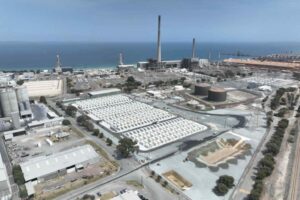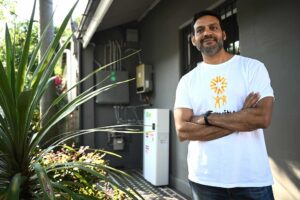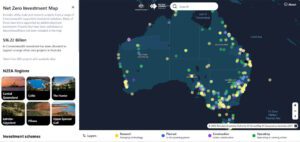Frank Jotzo, Australian National University
The main job of the Finkel Review, to be released this week, is to set out ways to reform the National Electricity Market (NEM) to ensure it delivers reliable and affordable power in the transition to low-carbon energy. Yet most of the attention has been focused on what type of carbon-reduction scheme Australia’s chief scientist, Alan Finkel, will recommend.
The expectation is that he will advocate a “low emissions target” (LET), and it looks like industry is getting behind this.
That would be instead of an emissions intensity scheme (EIS), which had been supported by much of industry as well as regulators and analysts, but the government rejected this.
Both types of scheme are second-best approaches to a carbon price. They can have similar effects depending on their design and implementation, although an EIS would probably be more robust overall.
How a LET might work
A LET would give certificates to generators of each unit of electricity below a threshold carbon intensity. Electricity retailers and industry would be obliged to buy the certificates, creating a market price and extra revenue for low-emission power generators.
How many certificates get allocated to what type of power generator is an important design choice. Government would also determine the demand for the certificates, and this defines the overall ambition of the scheme.
At its core, the scheme would work rather like the existing Renewable Energy Target, which it would replace. But the new scheme would also include some rewards for gas-fired generators, and perhaps even for coal-fired generators that are not quite as polluting as others. The question is how to do this.
A simple but crude way of implementing a LET would be to give the same number of certificates for every megawatt hour (MWh) of electricity generated using technologies below a benchmark level of emissions intensity. In practice, that would be renewables and gas. In principle, the scheme could include nuclear power as well as coal plants with carbon capture and storage, but neither exists in Australia, nor are they likely to be built.
Such a simple implementation would have two drawbacks. One, it would create a strong threshold effect: if your plant is slightly above the benchmark, you’re out, slightly below and you’re in. Two, it would give the same reward to gas-fired generators as to renewables, which is inefficient from the point of view of emissions reduction.
A better way is to scale the amount of certificates issued to the emissions intensity of each plant.
If the benchmark was 0.7 tonnes of carbon dioxide per MWh of electricity (as some media reports have predicted), then a gas plant producing 0.5 tonnes of CO₂ per MWh would get 0.2 certificates per MWh generated. A wind or solar farm, with zero emissions, would receive 0.7 certificates per MWh generated.
The benchmark could also be set at a higher level, potentially so high that all power stations get certificates in proportion to how far below the benchmark they are. For example, a benchmark of 1.4 tonnes CO₂ per MWh would give 1.4 certificates to renewables, 0.9 certificates to the gas plant, 0.5 certificates to an average black coal plant and 0.2 certificates to a typical brown coal plant.
Including existing coal plants in the LET in this way would create an incentive for the sector to move towards less polluting generators. It would thus help to reduce emissions from the coal fleet, and perhaps pave the way for the most polluting plants to be retired earlier. But the optics would not be good, as the “low emissions” mechanism would be giving credits to coal.
Whichever way certificates are distributed, the government also has to specify how many certificates electricity retailers need to buy. Together with the benchmark and with how electricity demand turns out, this will determine the emissions intensity of overall power supply. The benchmark would need to decline over time; alternatively, the amount of certificates to be bought could be increased.
The price of LET certificates would depend on all of these parameters, together with the cost of energy technologies, and industry expectations about the future levels of all of these variables. As the experience of the RET has shown, these can be difficult to predict.
Low emissions target vs emissions intensity scheme
An emissions intensity scheme (EIS) is the proposal that in recent times had the broadest support in the policy debate. Finkel’s preliminary report referenced it and the Climate Change Authority earlier put significant emphasis on it. But it got caught in the internal politics of the Liberal-National Coalition and was ruled out.
Under an EIS, the government would set a benchmark emissions intensity, declining over time. Generators below the benchmark would be issued credits, whereas those running above the benchmark would need to buy credits to cover their excess emissions. Supply and demand set the price in this market.
Depending on how the parameters are set, the effects of a LET and an EIS on the power mix and on power prices would differ, but not necessarily in fundamental ways.
There are some key differences though. Under a LET, electricity retailers will need to buy certificates and not all power plants may be covered by a low-carbon incentive. Under an EIS, the higher-polluting plants buy credits from the cleaner ones, and all types of plants are automatically covered. The EIS market would be closely related to the wholesale electricity market, with the same participants, whereas a LET market would be separate and distinct, like the RET market now.
Further, the benchmark in an EIS directly defines the emissions intensity of the grid and its change over time. Not so for the benchmark in a LET. A LET will also require assumptions about future electricity demand in setting the total amount of credits that should be purchased – and bear in mind that the estimates used to calibrate the RET were wildly off the mark.
What’s more, an EIS might present a chance to circumvent the various special rules and exemptions that exist in the RET, and which might be carried over to the LET.
Politics vs economics
Neither a LET nor an EIS provides revenue to government. Since the demise of Australia’s previous carbon price this has often been considered desirable politically, as it avoids the connotations of “carbon tax”. But economically and fiscally it is a missed opportunity.
Globally, most emissions trading schemes generate revenue that can be used to cut other taxes, help low-income households, or pay for clean energy research and infrastructure.
An economically efficient system should make carbon-based electricity more expensive, which encourages energy consumers to invest in energy-saving technology. Both a LET and an EIS purposefully minimise this effect, and thus miss out on a key factor: energy efficiency.
Ambition and confidence
More important than the choice of mechanism is the level of ambition and the political durability of the policy.
Bringing emissions into line with the Paris climate goals will require fundamental restructuring of Australia’s power supply. Coal would need to be replaced well before the end of the lifetime of the current plants, probably mostly with renewables.
To prompt large-scale investment in low-carbon electricity, we need a reliable policy framework with a genuine and lasting objective to reduce emissions. And investors need confidence that the NEM will be governed by rules that facilitate this transition.
Of any policy mechanism, investors will ask the hard questions: what will be its actual ambition and effects? Would the scheme survive a change in prime minister or government? Would it stand up to industry lobbying? Investor confidence requires a level of predictability of policy.
![]() If a LET were supported by the government and acceptable to the Coalition backbench, and if the Labor opposition could see it as a building block of its climate policy platform, then the LET might be a workable second best, even if there are better options. Over the longer term, it could be rolled into a more comprehensive and efficient climate policy framework.
If a LET were supported by the government and acceptable to the Coalition backbench, and if the Labor opposition could see it as a building block of its climate policy platform, then the LET might be a workable second best, even if there are better options. Over the longer term, it could be rolled into a more comprehensive and efficient climate policy framework.
Frank Jotzo, Director, Centre for Climate Economics and Policy, Australian National University
This article was originally published on The Conversation. Read the original article.









